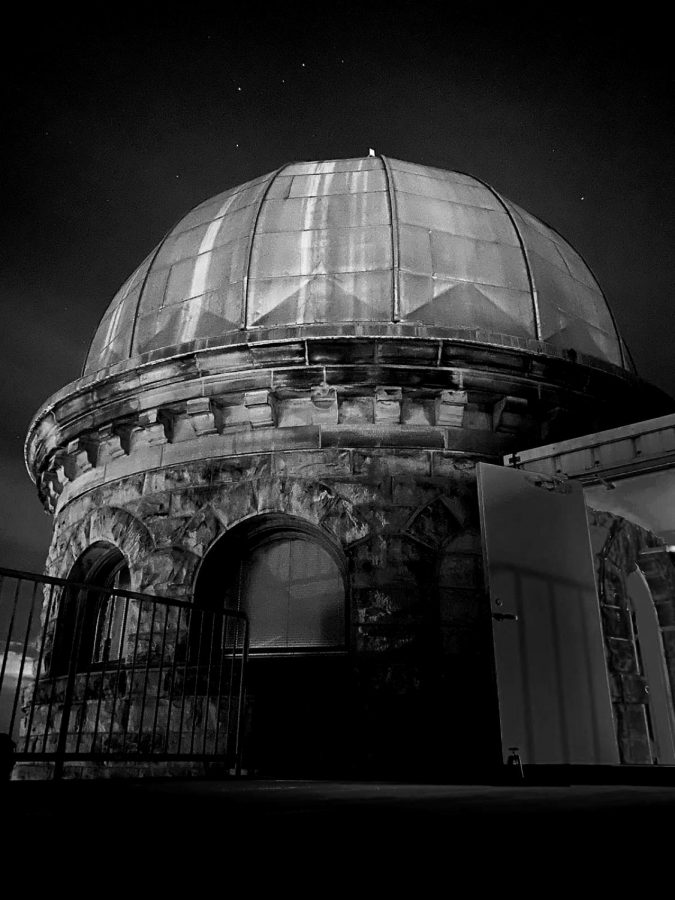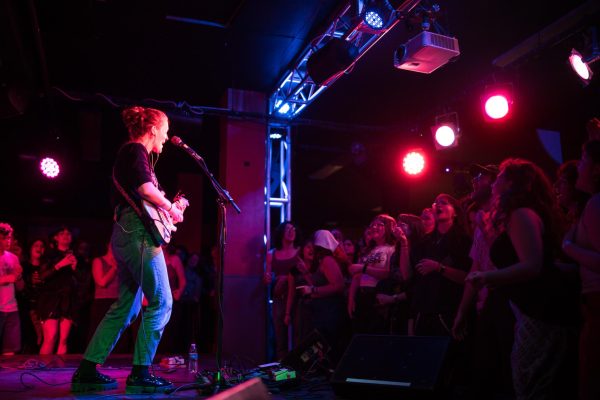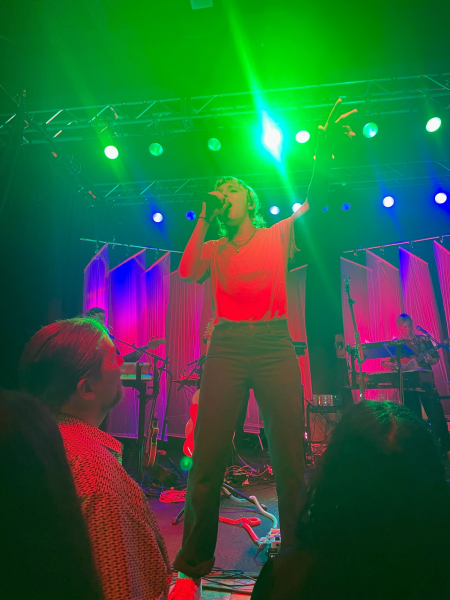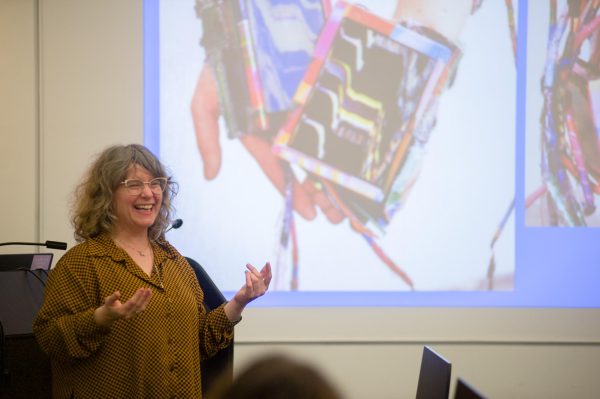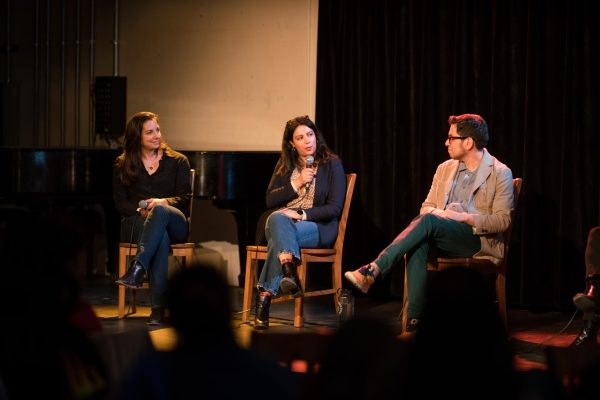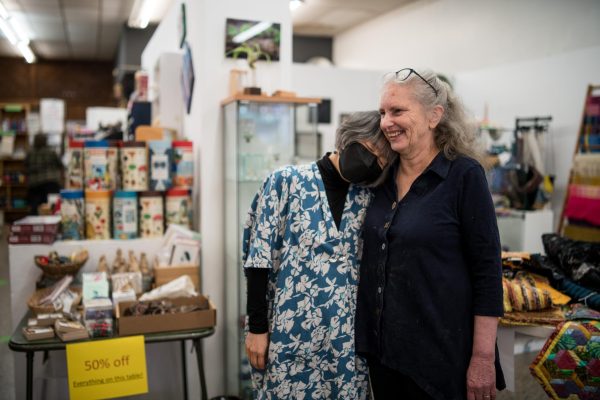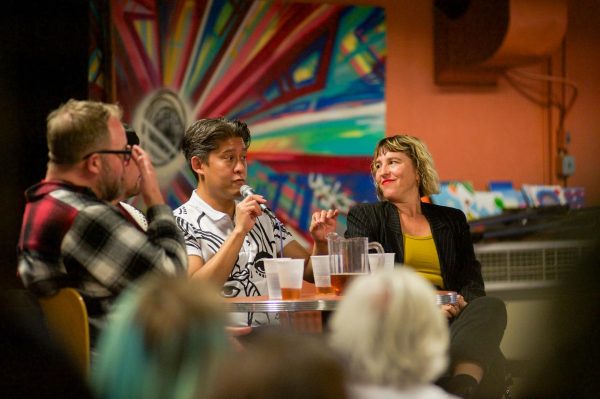The Magic of the Oberlin Observatory
Photo by Mads Olsen Photo Editor
The Oberlin Observatory, erected in 1929, is open to the public after sunset on the first and third Fridays of the month during the academic year.
Anyone who has wandered under the high ceilings of Peters Hall can attest to the building’s Hogwarts-esque mystique that so many of us secretly idealized in our search for the perfect liberal arts college. This Gothic grandeur sits in historical context; completed in 1887, Peters, which is home to world language classrooms and offices for academic services, is the fourth-oldest building on campus. The charm of the building can be attributed to a unique resource, established at a much later date in 1929, when Peters gained its observatory. Culminating in a high dome and outfitted with a wide deck, the Observatory provides a space for astronomy students, the Oberlin Astronomy Club, and the public alike to gaze through a 14-inch aperture telescope into the planetary movements visible in our corner of the Ohio sky. Below the Observatory deck sits the Taylor Planetarium which projects the 1,000 brightest stars and the planets onto a dome 4 meters in diameter.
“I have two memories at the Observatory, and both are my favorite,” said College third-year Mo Singletary. “The first time, the sky was as clear as it had been in a minute, and we got up there and it felt like we could see all of Ohio. The second time I went was recently and it was a full moon, and I looked in the telescope and saw Saturn and Jupiter and learned about how they change locations in the sky — it was so cool.”
If, like Singletary, you’re hungry for supplemental knowledge, a trip to the Observatory may result in an encounter with Observatory & Planetarium Coordinator Dave Lengyel and his powerful laser pointer. Lengyel has been working at the Observatory since 2010, but his astronomical wisdom long predates this position. He taught AP Chemistry and Astronomy at Marion L. Steele High School in Amherst, OH, for 35 years before retiring from full-time teaching. Lengyel says that in his experience, astronomy is the type of subject that all kinds of learners approach with enthusiasm.
“In fact, I instituted the astronomy program,” Lengyel said. “We wanted to put in a new elective, and I said, ‘Hey, I’d love to do astronomy.’ And it became very popular. … I do a very similar thing here as to what I did in high school, because the Introductory Astronomy class, [ASTR] 100, is on a little bit [of a] higher level, but it’s basically the same material. … I didn’t wanna teach full-time anymore, but this keeps me in the game. And plus I just really love working with Oberlin students. … The really cool thing is that most of our students in the introductory courses — and those are the ones that I interact with the most — are not science people. They’re usually Conservatory majors; they might be Oboe majors, [and] we’ve had a lot of Creative Writing majors. In every other discipline there are some that are in science, but the class is taught in such a way that it is very easy to deal with a heterogeneous group in terms of their background. You don’t have to have a strong science background to do [ASTR] 100.”
Lengyel doesn’t give the secrets of the sky to just Oberlin students; he also hosts a number of special groups, including community groups, Cub Scouts, and local second graders. He employs a variety of tools to impart his celestial knowledge during his teaching sessions. “The laser pointer is great,” he said. “We point out things and then we have about a dozen pairs of binoculars here. Sometimes what we’ll do is we’ll point out objects, like the Andromeda galaxy, and I’ll use the pointer and then everybody brings their binoculars to where we’re pointing and then they can see the object that way; it really works out well. Then we set up telescopes; we usually have three or four that we set up on the deck.”
College third-year Sam Frank is one of those students mentioned earlier — not a “science person,” but enthralled by space nonetheless. After a single encounter with the Observatory, Frank knew he wanted to work there. COVID-19 briefly delayed Frank’s ambitions, but this semester he shot Lengyel an email. Lengyel quickly invited Frank over to his office to discuss an open position at the Observatory. Frank is still not completely sure what this job will entail, other than manipulation of “the big telescope,” but he has a rapturous image of his future holding down the deck.
“I’m definitely wearing a long cloak,” Frank said. “That’s the main thing that comes to mind; maybe a cup of hot tea, binoculars on hand just in case. I love space. Space is cool, it’s inspiring, it’s beautiful…We learn about ourselves while we learn about space.”
Though any astrological conversation with Lengyel is an inspiring learning opportunity in itself, there are some notable opportunities to interact with astrological phenomena over Ohio coming up in the near — and slightly distant — future.
“One of the many cool things about astronomy is there’s always something different going on in the sky — different planets at different times of the year,” Lengyel said. “We have a lunar eclipse coming up on Nov. 19 at 4 in the morning, and right here in Oberlin, April 8, 2024, we have a total solar eclipse, which is a big deal.”
The Observatory is open to the public after sunset on the first and third Fridays of the month during the academic year. You can find additional information and events on the Oberlin Events Calendar, and on the Observatory Facebook page, which Lengyel regularly updates.


